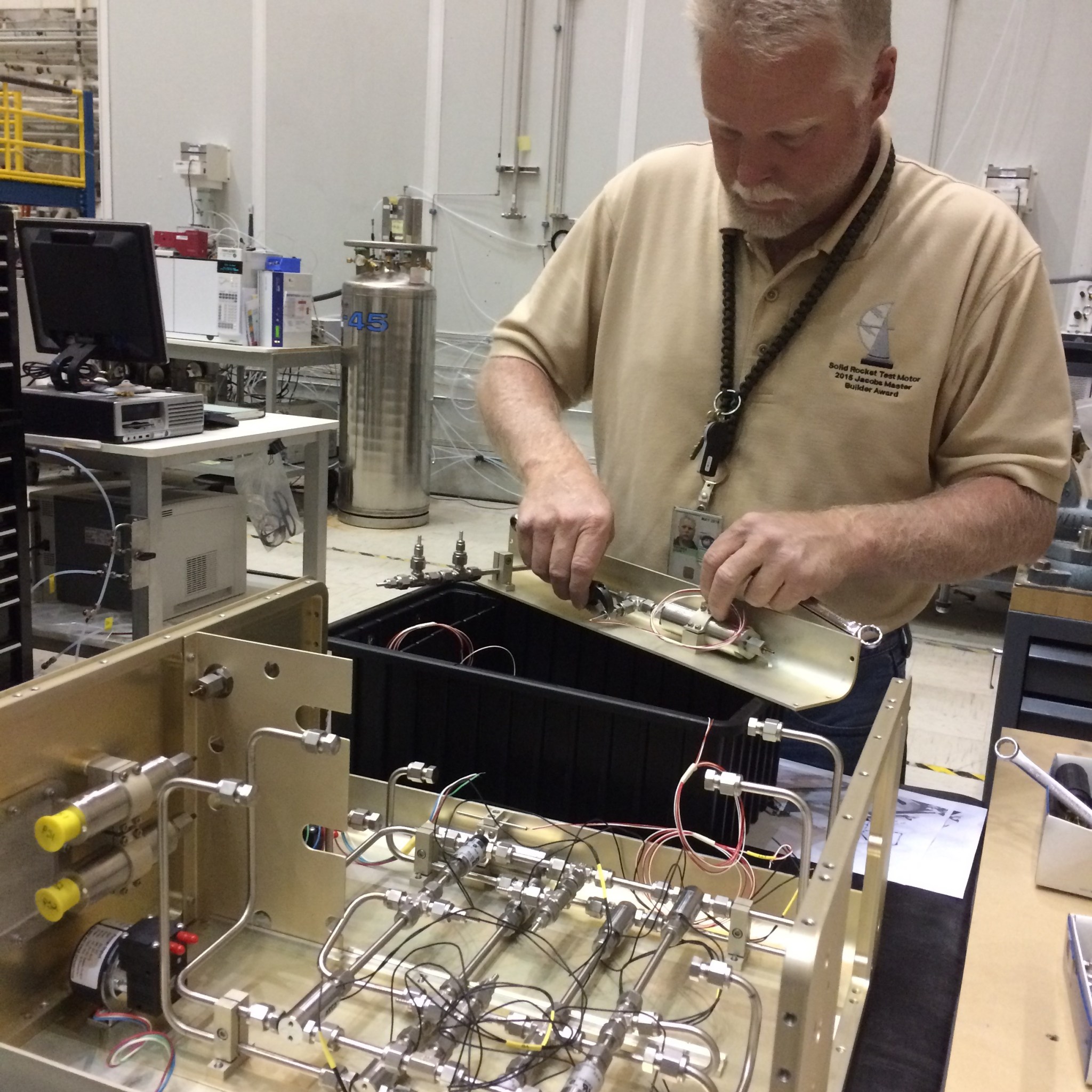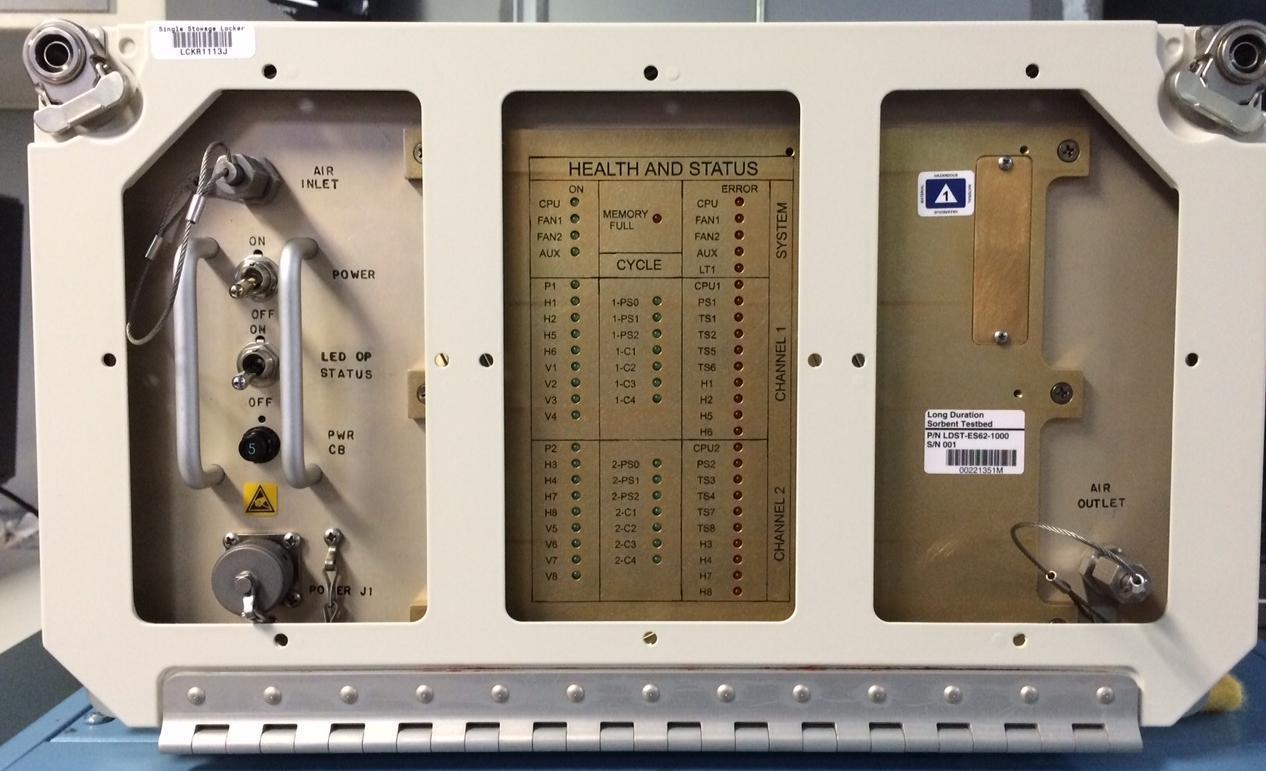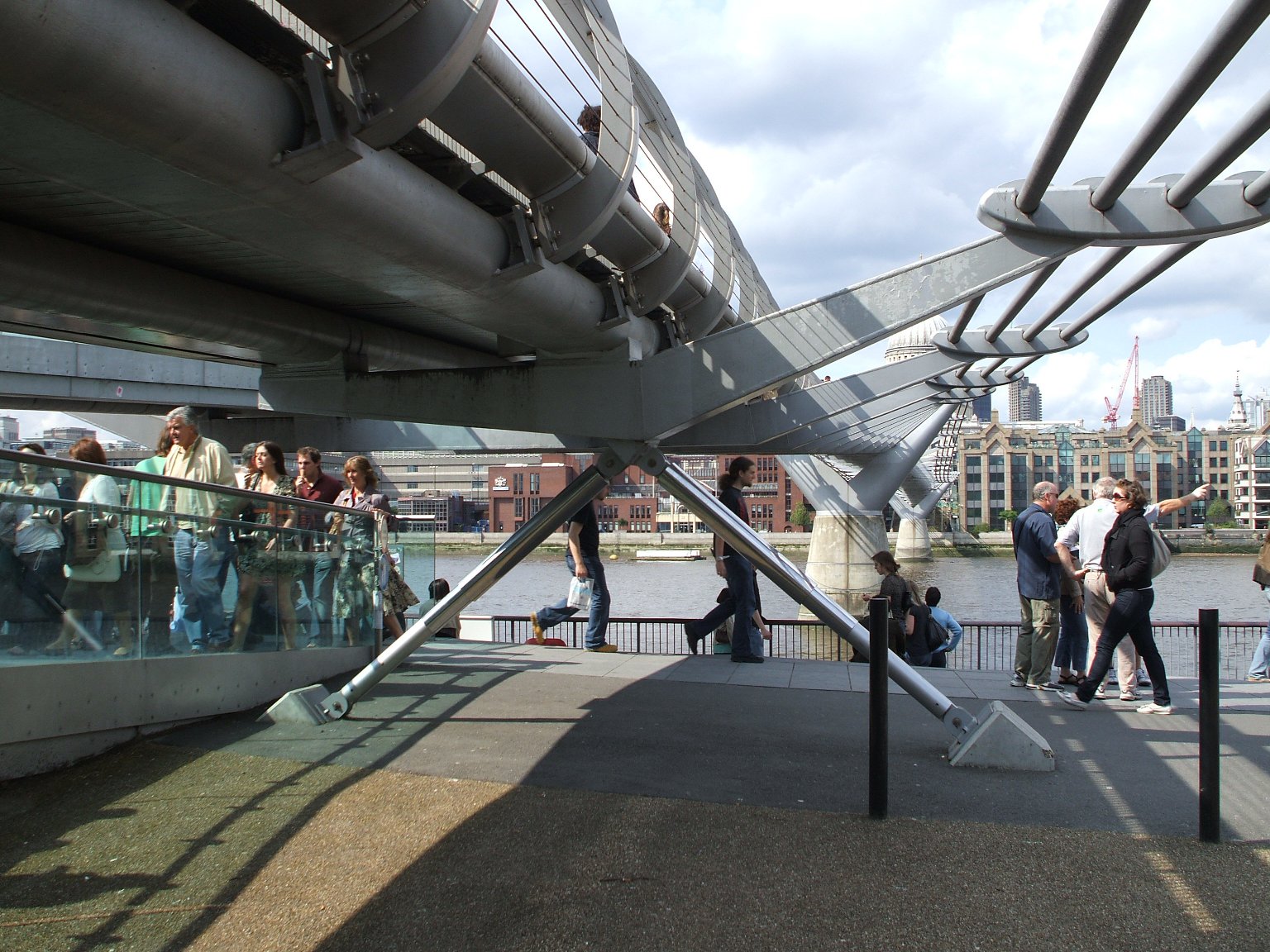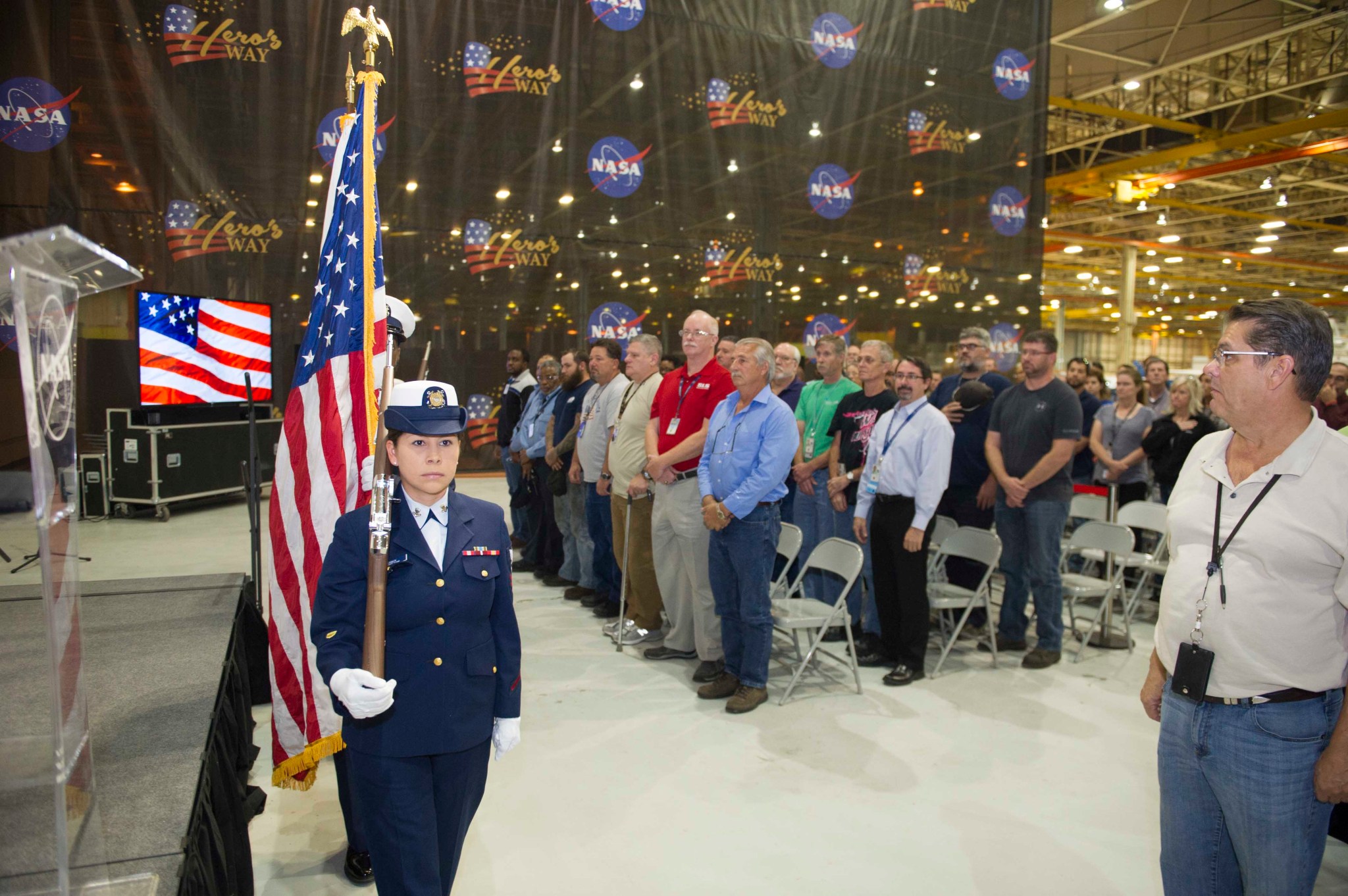In This Week’s Star
- Marshall Center Director Todd May to Hold All-Hands Meeting Nov. 17
- Clearing the Air in Space: Improving Life Support on International Space Station and for Deep-Space Exploration
- Marshall Spinoff Helps Keep a London Bridge from Falling Down
- Marshall Shows Appreciation for Veterans at Nov. 9 Meet-and-Greet Event
- Michoud Assembly Facility Honors Veterans
- This Week in NASA History: Third Crewed Skylab Mission Launches — Nov. 16, 1973
- Obituaries
Marshall Center Director Todd May to Hold All-Hands Meeting Nov. 17
NASA Marshall Space Flight Center team members are encouraged to join Marshall Center Director Todd May for an all-hands meeting at 9:30 a.m. Nov. 17 in Morris Auditorium in Building 4200.
May will discuss Marshall’s roles and responsibilities, give an election and transition update and share the latest on the center’s realignment.
After May’s remarks, he will answer questions during a live question and answer session. To submit questions before the meeting, click here.
The meeting will also be broadcast live on Marshall’s Desktop TV.
Clearing the Air in Space: Improving Life Support on International Space Station and for Deep-Space Exploration
By Bill Hubscher
For decades, NASA engineers have been key players in the design, fabrication and testing of the equipment that keeps astronauts safe in space. Teaming with industry, NASA created the Environmental Control and Life Support System for the International Space Station to provide the basic elements needed for survival — clean water and air.
“Exposure to the unique environment in the space station can change the way materials behave,” said David Howard, program manager of the investigation at NASA’s Marshall Space Flight Center. “This includes what we use to filter air and water, so we need options for systems we create for the future.”
The life support system on the space station currently uses a silica gel to remove humidity or water from the air, allowing another piece of hardware to more efficiently scrub carbon dioxide from the air, keeping it from becoming toxic. After a year, that gel loses up to 75 percent of its capacity to absorb water, making it necessary to replace it relatively often. As astronauts venture farther out into the solar system, they will not have the benefit of frequent resupply missions, and must consider the weight and space limitations associated with packing all the supplies they might need to bring with them on the mission.
Engineers and chemists believe that the gel loses efficiency due to the environment inside the station and the more than 200 recorded contaminants. The station is a very closed environment. Normal off gassing, or ventilation, of odors from plastics and personal care products remain in the cabin air instead of being diluted by the atmosphere as they are on Earth. While a specialized system scrubs these contaminants, trace amounts still remain in the cabin.
“There is a complex atmosphere on the space station,” said Jim Knox, an aerospace engineer at Marshall and principal investigator for the study. “The mix of environmental contaminants alone on the station is new territory for us. As we select materials for future systems, we need to know how these materials will react to those contaminants. If we can build better filters, we can cut back on the number of replacements we would send on deep-space missions and can use that space for other payloads.”
This testbed will study new substances that attract and collect molecules to determine which would be most effective for use on long-duration missions. The device launched with 12 different materials to expose to the station environment. These materials were selected specifically to assist with carbon dioxide removal. The “scrubbers” on the station need water removed from the air so carbon dioxide can be more easily processed along with waste hydrogen from the oxygen generator, converting two waste products into water, a precious commodity.
When the investigation is installed on the station, it will run for a year without the need for involvement from the astronauts. Ground crews will monitor it from Earth while conducting a similar experiment with the materials in the laboratory on the ground for comparison.
The Long Duration Sorbent Testbed will not only provide data on the best material for use on long journeys in space, but it will also demonstrate how long those materials will be effective. Both are critical points to be considered when designing spacecraft that will carry us farther into space than ever before.
Hubscher, an ASRC Federal/Analytical Services employee, supports the Office of Strategic Analysis & Communications.
Marshall Spinoff Helps Keep a London Bridge from Falling Down
By Will Bryan
Legend has it that when the first stage of the Saturn V — comprised of five mighty F-1 engines — was tested at NASA’s Marshall Space Flight Center, seismometers at the University of Alabama in Tuscaloosa would register the activity.
Today, more than 550 buildings, bridges and structures all across the globe are protected from earthquakes, high winds and other damaging forces by a technology introduced to NASA in the 1960s to protect the launch umbilical tower and Saturn V rocket from forces experienced during launch.
The product, called a damper, was developed by Taylor Devices of North Tonawanda, New York, and was brought to Marshall as a way of absorbing the energy of the launch pad umbilicals as they rapidly retreated from the launching, fire-breathing monster of a rocket to which they once provided the necessities of life. These necessities include electricity, communications, propellant and oxidizer.
During the five decades following the successful lunar missions, Taylor Devices and NASA have continued to work in close collaboration to develop dampers — essentially shock absorbers. After the Apollo program, Taylor Devices worked with NASA to help develop computers that operate using fluids at transonic and supersonic speeds. This work, although short-lived, laid the foundation for the dampers used to protect the space shuttle stack and its tower during launches. Dampers have also been used to protect payloads flying to the International Space Station and continue to be used on the orbiting laboratory.
Taylor Device’s experience in building dampening systems for NASA enabled it to create a product to protect buildings, bridges and other structures from the violent vibrations experienced during earthquakes and other high-energy events.
One such event involves the famed Millennium Bridge in London. When the pedestrian bridge opened in June 2000 and thousands of people began walking across it, the bridge swayed noticeably. Some pedestrians held onto railings as the swaying increased. Officials, concerned for public safety, closed the bridge two days after opening until a cause and solution could be determined.
Ultimately it was determined that when a large number of people walked across the bridge, a significant number of them would unconsciously and randomly fall into step with each other. This produced a small sideways motion on the bridge; a motion that happened to be in the same frequency range as a natural vibration rate of the bridge. That rate just so happened to be equivalent with normal walking paces. In response to the bridge’s movement, other people fell into step with the sway, providing a positive feedback, increasing the swaying motion of the bridge.
The solution resided “across the pond” in New York with Taylor Devices. After inspection and extensive analyses of the situation, the company installed 37 of its fluidic dampers along with 50 tuned mass oscillators — another type of shock absorber — to remedy the issue. The swaying situation was resolved, and the bridge — seen in the movie “Harry Potter and the Half-Blood Prince” — was reopened in 2002, although its moniker the “Wobbly Bridge” remains.
No building or structure using Taylor Devices’ dampening systems has suffered even minor damage due to earthquakes and similar phenomena, saving money and, more importantly, lives. The device was inducted into the Space Foundation’s Space Technology Hall of Fame in 2015, once again proving the value of technology developed for and by America’s space program.
If you believe that a technology you’ve been working on can have an impact outside of the space program, submit a New Technology Report.
As Terry Taylor, manager of Marshall’s Technology Transfer Office explains, “Every year the agency makes thousands of technologies available to industry. These technologies generate revenue, create jobs, save lives and show a clear return on investment for the nation’s space program.”
Bryan, an ASRC Federal/Analytical Services employee, supports the Office of Strategic Analysis & Communications.
Marshall Shows Appreciation for Veterans at Nov. 9 Meet-and-Greet Event
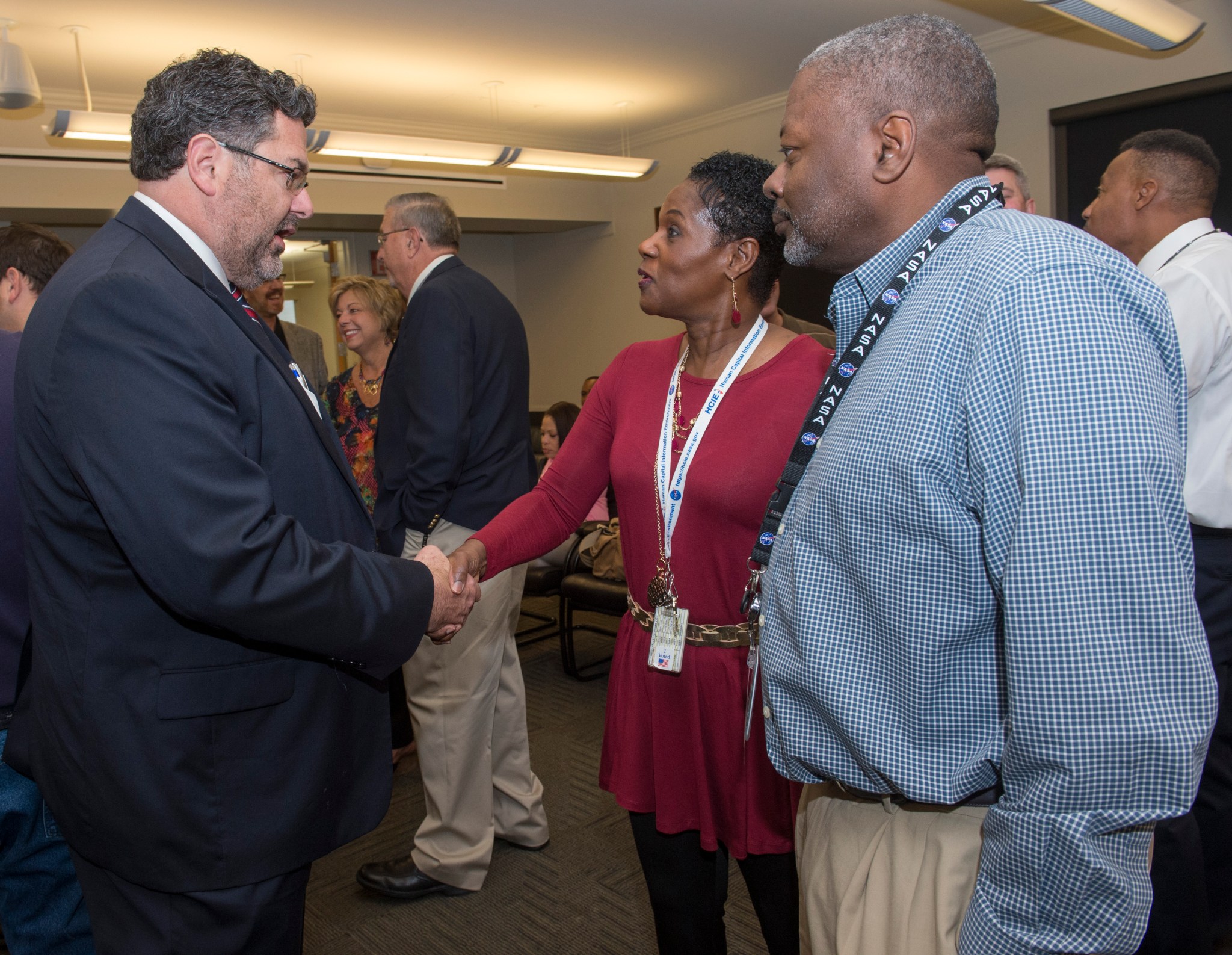
Todd May, left, director of NASA’s Marshall Space Flight Center, chats with TyAnne Thomas, center, a human resources specialist in Marshall’s Training and Incentives Office, and Barry Kaigler, a contract specialist in the Office of Procurement, during Marshall’s annual Veterans Day meet-and-greet event Nov. 9. Thomas, a former linguist for U.S. Army Military Intelligence and later a special agent probing cases of general and economic crime for the Army Criminal Investigation Command, served around the world before joining NASA in 2012. Kaigler served in the U.S. Army Ordnance Corps at Redstone Arsenal and supported missile testing at Fort Bliss, Texas, and White Sands Missile Range, New Mexico. After concluding his Army career, he joined NASA in 1989. Veterans Day was established by Congress as a national holiday beginning in 1938. Marshall’s annual commemoration of Veterans Day is organized by the Office of Diversity and Equal Opportunity. (NASA/MSFC/Emmett Given)
Michoud Assembly Facility Honors Veterans
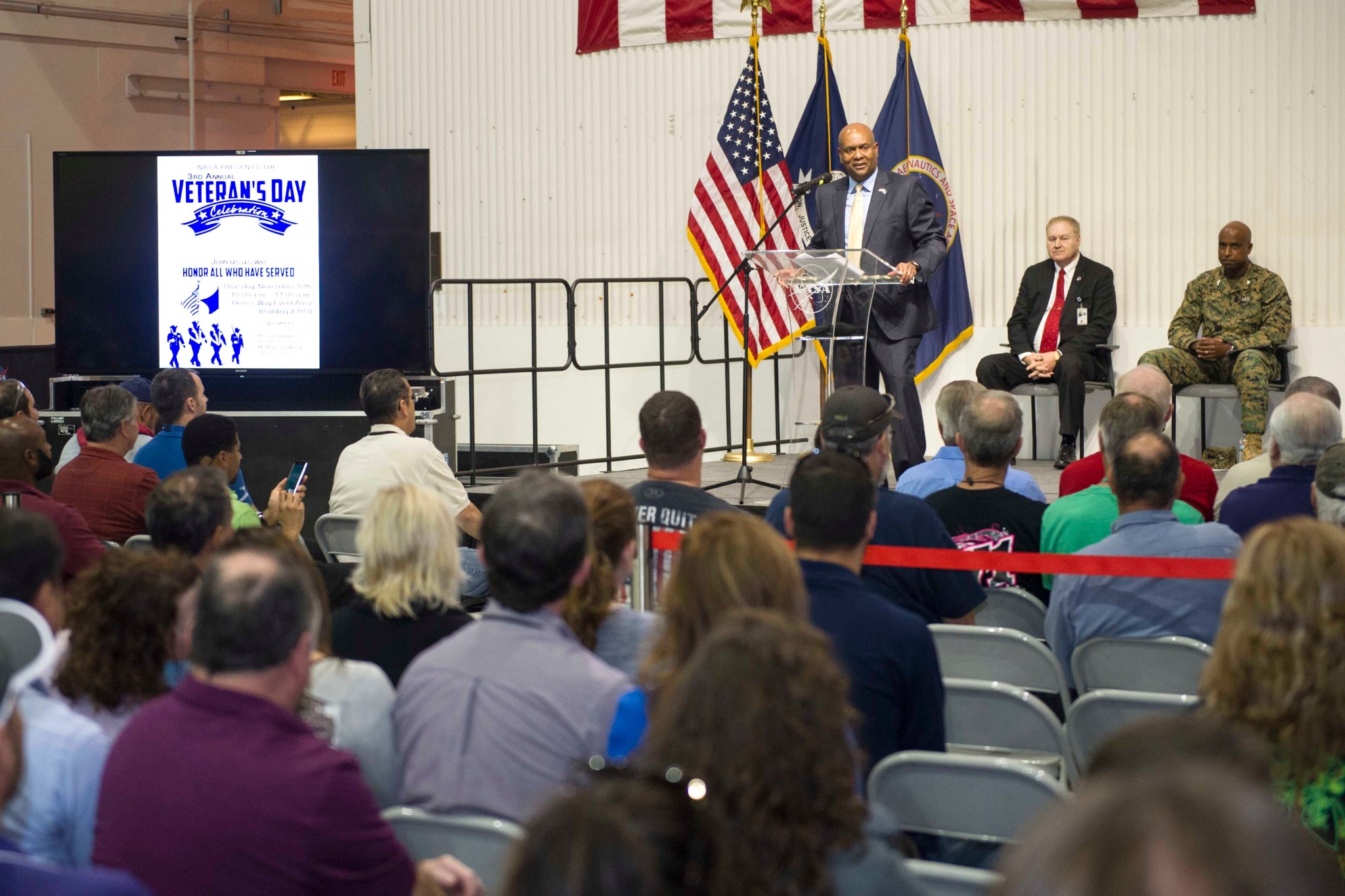
Bobby Watkins, NASA’s Michoud Assembly Facility director, left, welcomes team members to Michoud’s third Annual Veterans Day Celebration Nov. 10. The event, which honored veterans for their service to our country, also featured addresses from Malcom Wood, Michoud chief operating officer, center, and U.S. Marine Col. Michael Robinson. (NASA/Michoud/Danny Nowlin)
Members of the U.S. Coast Guard present the colors at the annual Veterans Day Celebration. Ron Adams, a security officer at Michoud, sang the National Anthem to open the ceremony. NASA’s Marshall Space Flight Center manages Michoud for the agency. (NASA/Michoud/Danny Nowlin)
This Week in NASA History: Third Crewed Skylab Mission Launches — Nov. 16, 1973
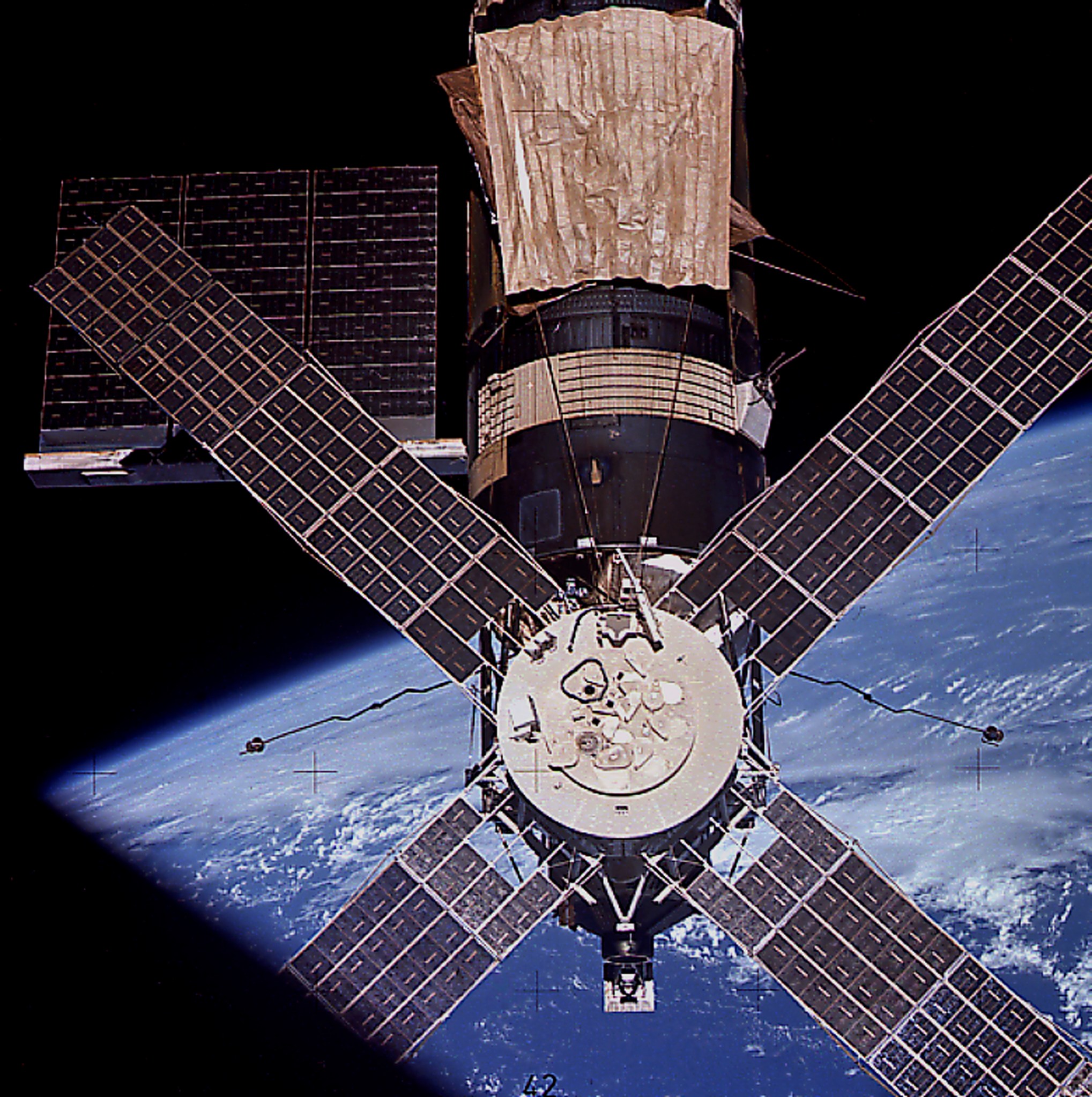
This week in 1973, Skylab’s third and final crewed mission, launched to America’s first space station. This image of Skylab in orbit was taken as the crew departed the space station after 84 days in the station. NASA’s Marshall Space Flight Center provided the Saturn launch vehicles for the four Skylab missions and directed many of the space station’s experiments. Today Marshall’s Payload Operations Integration Center serves as “science central” for the International Space Station, working 24/7, 365 days a year in support of the orbiting laboratory’s scientific experiments. The NASA History Program is responsible for generating, disseminating, and preserving NASA’s remarkable history and providing a comprehensive understanding of the institutional, cultural, social, political, economic, technological, and scientific aspects of NASA’s activities in aeronautics and space. For more pictures like this one and to connect to NASA’s history, visit the History Program’s webpage. (NASA)
Obituaries
Evan S. Hendricks, 96, of Huntsville, died Nov. 4. He retired from the Marshall Center in 1980 as an aerospace engineer. He is survived by his wife, Mary S. Hendricks.



























